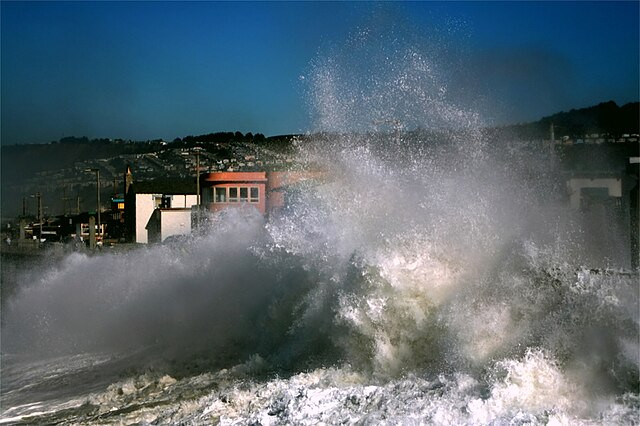The recent deluge from an atmospheric river has transformed the usually placid Los Angeles River into a ferocious torrent, challenging the city's flood control measures and prompting dramatic rescues. The unprecedented rainfall, part of a wider pattern of severe weather affecting California, has spurred a discussion about the state's readiness for such extreme events and the impact of climate change on weather patterns.
"In a dramatic river rescue Monday afternoon, an LA Fire Department helicopter crew pulled a man from the turbulent water after he jumped in to save his dog when the animal was swept away by the current," reported the Los Angeles Times, highlighting the immediate human and animal peril posed by the swollen river.
The Los Angeles River, often overlooked as it meanders through the city's concrete channels, became the center of attention as it threatened to breach its banks. "The river was raging and even threatened to overspill its flood-control barriers in some sections," noted a local news outlet, underscoring the severity of the situation.
The broader impact of the storm on California was stark, with the state grappling with the aftermath of the atmospheric onslaught. "Nearly 38 million people are under flood alerts across the state and into Arizona, including about 10 million people in Los Angeles county," reported The Guardian, emphasizing the widespread nature of the emergency.
Governor Gavin Newsom's response to the crisis was swift, declaring a state of emergency for several counties, including Los Angeles. "Los Angeles mayor Karen Bass said during a Monday news conference that it's been 'a tough day for our city'," The Guardian added, capturing the local government's efforts to mitigate the storm's effects.
The storm's intensity was unprecedented, with rainfall reaching historical levels. "The University of California, Los Angeles, located on the west side of the city, received more than 11.8in - more than three times the average amount that falls in the entire month of February," UCLA climate scientist Chad Thackeray told USA Today, providing a metric for the storm's extraordinary impact.
As the city and state officials navigated the immediate challenges posed by the storm, the conversation inevitably turned towards the future. "The core of the low-pressure system is very deep, and it's moving very slowly and it's very close to us," Ryan Kittell, a meteorologist at the weather service's Los Angeles-area office, explained to the Los Angeles Times. "And that's why we have those very strong winds. And the slow nature of it is really giving us the highest rainfall totals and the flooding risk."
The storm has served as a wake-up call for California, highlighting the urgent need for robust infrastructure and preparedness strategies to withstand such extreme weather events. "As the storm continues, there are many water-soaked hillsides that have the potential to slide," Los Angeles Fire Chief Kristin Crowley cautioned, as reported by the Los Angeles Times, signaling the ongoing risks even as the storm abated.
With climate change expected to intensify such weather phenomena, California's recent ordeal underscores the critical intersection of environmental policy, urban planning, and emergency management. As the state recovers and reflects, the lessons learned from this event will undoubtedly shape its approach to future challenges posed by an ever-changing climate.






